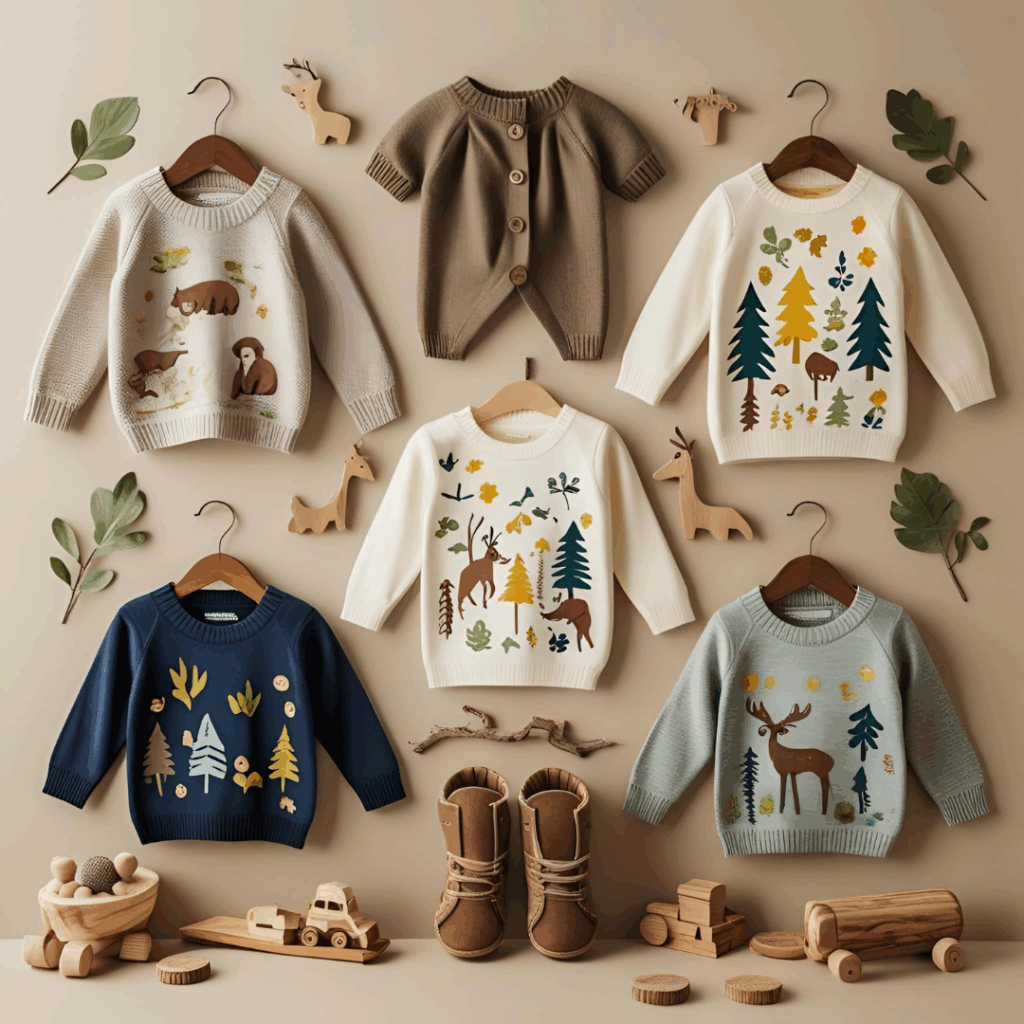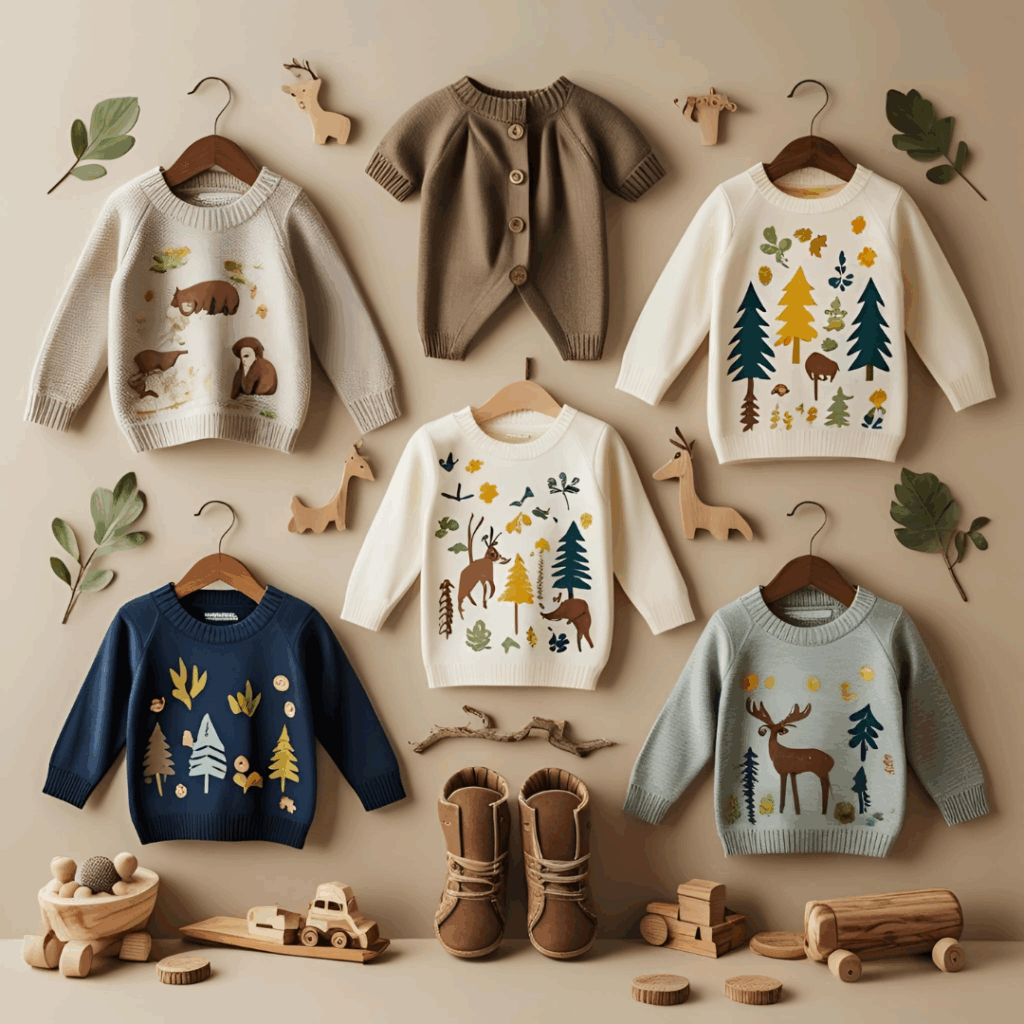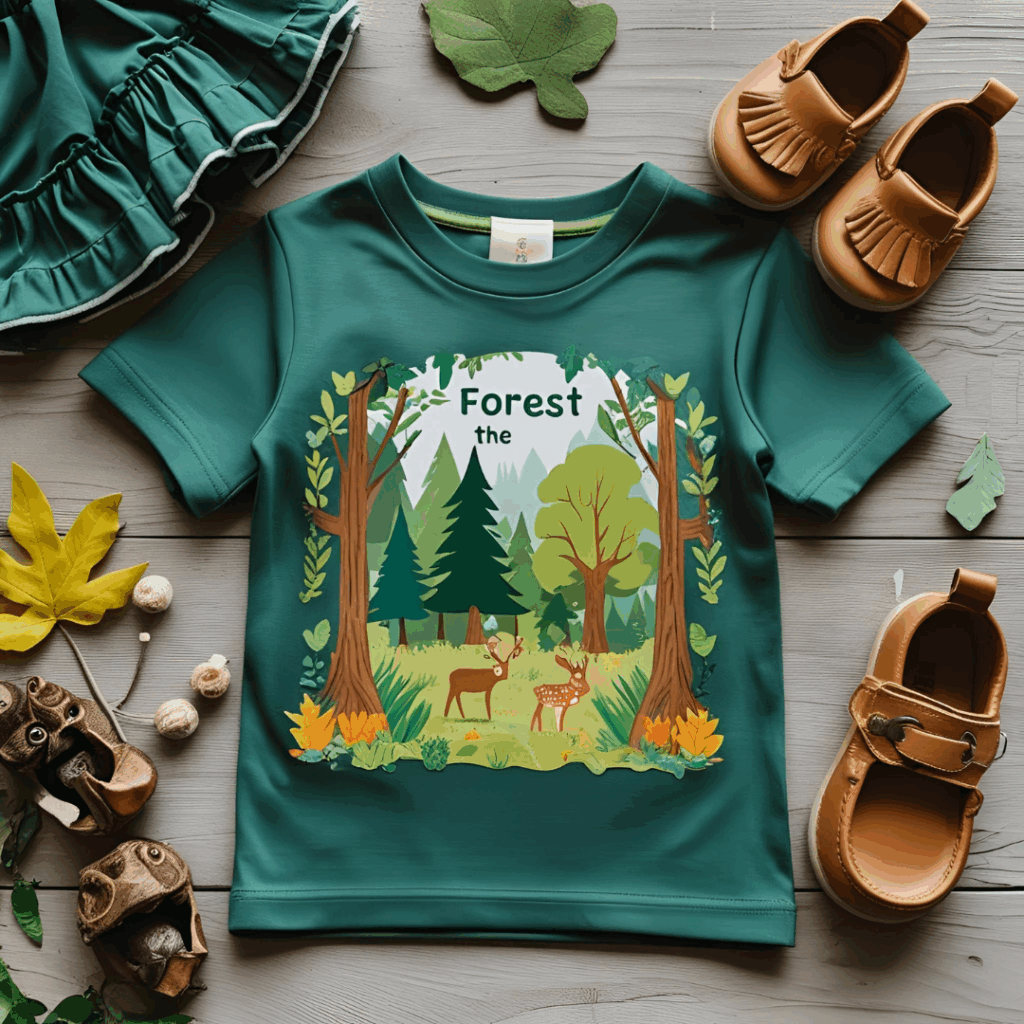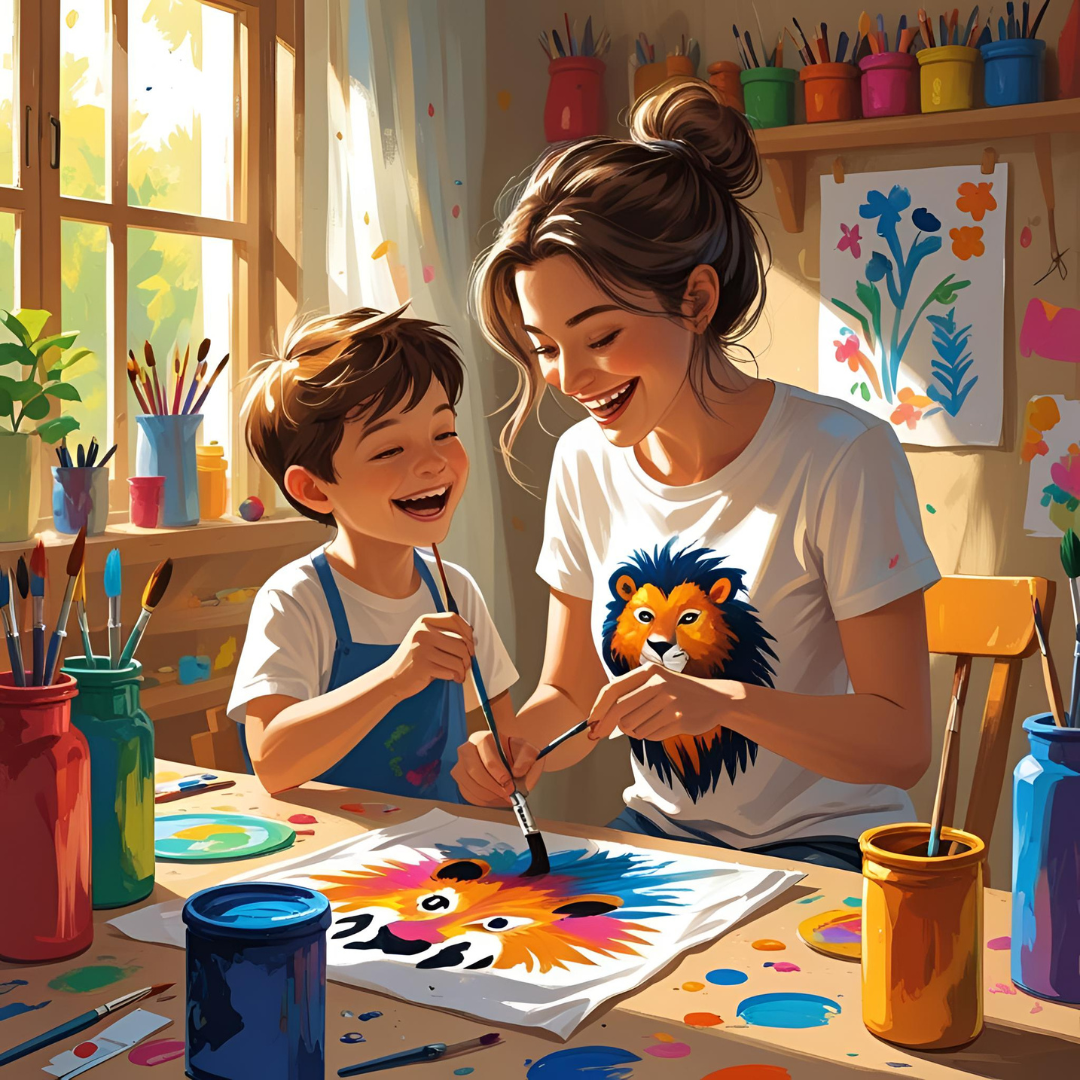Storytelling is one of the oldest and most effective ways to teach and pass on values. When we combine this ancient practice with something so present and personal in a child’s life — clothing — the educational and emotional impact becomes even more powerful. Here are the benefits:
Environmental Education Through Play: Children connect emotionally with characters and narratives. If a shirt tells the story of the endangered three-banded armadillo, the child is more likely to care about its protection and the biome it inhabits.
Stimulates Imagination and Creativity: Prints become more than static images — they gain context, fantasy, and adventure. This sparks imaginative play, storytelling, and the development of creative thinking.
Strengthens Family Bonds: Parents, grandparents, and educators can use the clothing as a natural prompt for meaningful conversations. A simple question like “Do you know who this little animal is?” turns into a journey of discovery and shared learning.
Purposeful Consumption: Buying a piece of clothing that teaches, that tells a story and carries meaning, is very different from buying only for aesthetics. This conscious choice shapes the child’s worldview, teaching them the importance of ethical and sustainable decisions.
What Are Storytelling Clothes About Brazilian Wildlife Like?
These clothes go far beyond fashion. They combine design, art, and elements of children’s literature to create garments that are true tools for learning. You’ll find:
- Illustrated prints rich in detail featuring native animals like anteaters, tapirs, golden lion tamarins, otters, and parrots
- Short educational phrases that complement the image and give voice to the animal, such as “I’m the gardener of the forest” said by the tapir, or “Every drop counts,” spoken by the capybara
- QR codes or interactive tags that link to digital stories (in video, audio, or text) about the animal and its habitat, deepening the learning experience
- Thematic collections where each piece features a different animal, forming an educational series children can collect
- Some innovative brands even create matching children’s books, turning dressing into part of a larger, immersive narrative

Story Examples to Print on Children’s Clothing
Here are some real ideas on how to integrate stories and the rich Brazilian fauna into fun and educational clothing designs:
“The Journey of the Blue Spix’s Macaw”
A young macaw raised in captivity dreams of discovering the vast Caatinga landscape. She soars through the northeastern skies, meets surprising animals, and learns the true meaning of freedom.
Print idea: T-shirts with stylized maps, vibrant blue skies, or phrases like “To fly is to live in freedom!”
“The Anteater’s Secret”
A curious anteater with the best nose in the forest feels invisible until he helps the other animals find underground water during a drought.
Print idea: Onesies with the anteater’s long snout and the phrase “Discovering a better world, one day at a time!”
“The Roar of the Jaguar”
A majestic jaguar hides in the forest shadows, silently guarding her home. She teaches her cubs about nature’s balance and the value of all living beings.
Print idea: Jackets with glowing jaguar eyes and the phrase “I’m the Guardian of the Forest, protecting life.”
“Capybara and the Sound of Water”
A friendly capybara, always near rivers, notices the sound of water is changing. She sets off to find out why and how to protect her aquatic home.
Print idea: Pajamas with ripples and water elements, accompanied by the phrase “Listen to nature — it always speaks!”



How to Build a Narrative Wardrobe for Children
You can start small by mixing educational and themed pieces with your child’s everyday wardrobe. Here’s how:
Choose Meaningful Designs: Opt for prints that faithfully or artistically represent the animal, its colors, and its habitat. The more realistic or illustrative the image, the better for the child to identify and learn.
Look for Extra Content: Many conscious brands offer additional materials — like digital books, kids’ podcasts, educational videos, or info cards — that enrich the animal’s story.
Create Educational Kits: Pair the outfit with a book, educational toy, or board game about the animal. This makes a purposeful gift and a complete learning experience.
DIY at Home: Can’t find your dream piece? Paint your own forest-themed clothes and tell your animal’s story through writing or storytelling. It’s a meaningful, creative DIY activity.
Where to Find Children’s Clothing with Wildlife Stories
The conscious children’s fashion market is growing in Brazil. To find these special pieces, check out:
- Brazilian sustainable fashion brands: Many are launching purposeful and educational collections. Look for brands that:
- Use organic cotton or other eco-friendly fabrics
- Produce locally and on a small scale
- Partner with artists, biologists, or children’s authors to create stories
- Support conservation projects with part of their proceeds
- Sustainable fairs and creative markets: These events are great for finding artisans and small producers with unique designs and original storytelling.
- Educational thrift shops: Some curated thrift stores now offer purposeful clothing — great for reuse, savings, and continuing a garment’s story.
Activities to Expand the Impact of Story-Based Clothing
Want to go beyond fashion and make it an unforgettable educational experience? Try these activities:
- Read a story about the animal on the clothing before your child wears it
- Create alternate endings to the story on the shirt, boosting imagination
- Put on a puppet show using characters from the clothing prints
- Start a “forest journal,” where your child draws or writes about the animal of the day
- Go on educational outings to natural history museums, conservation-focused zoos, or guided nature walks in parks
Children’s clothing that tells stories about Brazil’s fauna is much more than fashion — it’s a bridge between childhood, education, and sustainability. By dressing children in messages of respect for nature, we are planting seeds of care, empathy, and environmental awareness from an early age in a fun and memorable way.
Why not look at your child’s wardrobe as a living library of stories? Choose a piece, tell a tale, and help dress the world you want to see — a more conscious, ethical, and wonder-filled world, close to nature.







